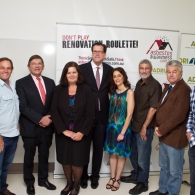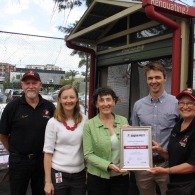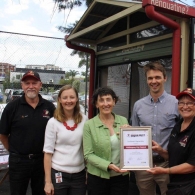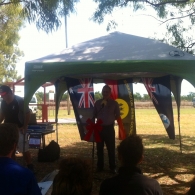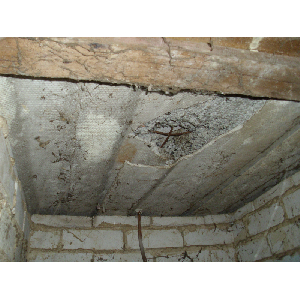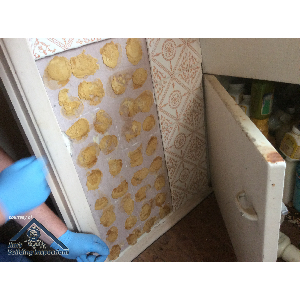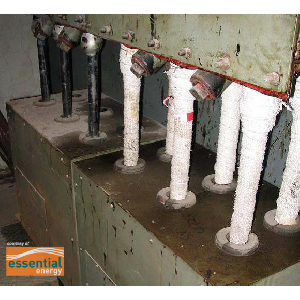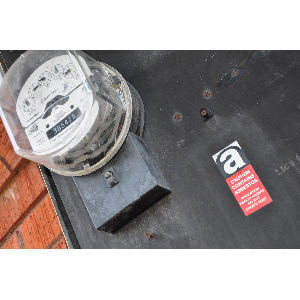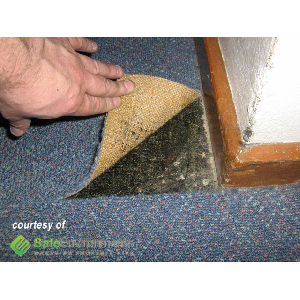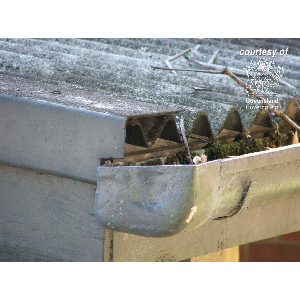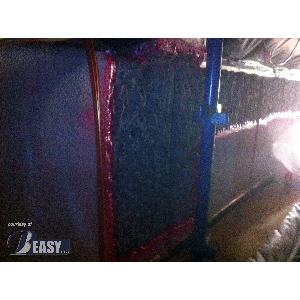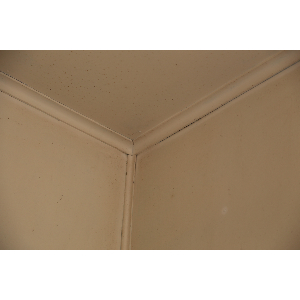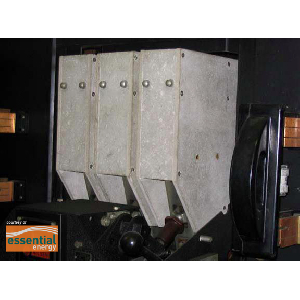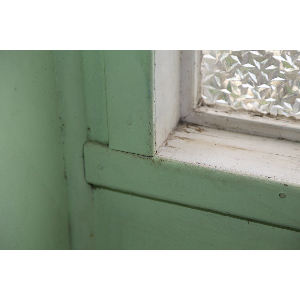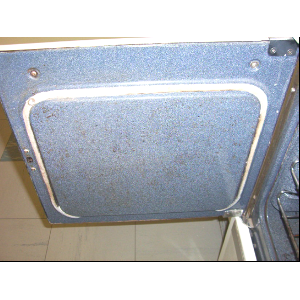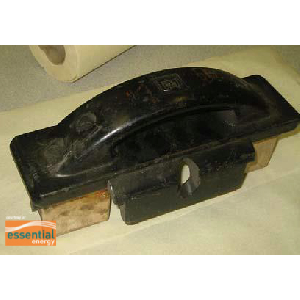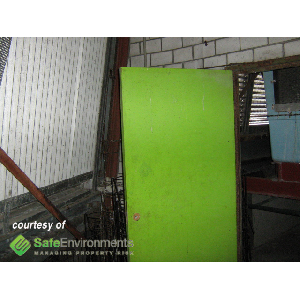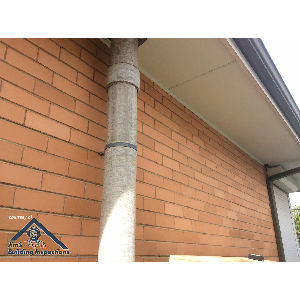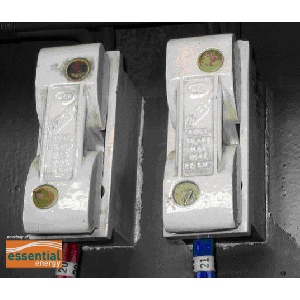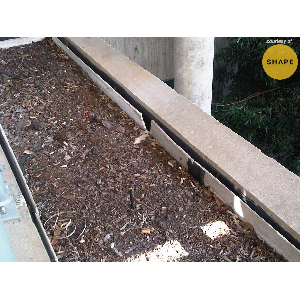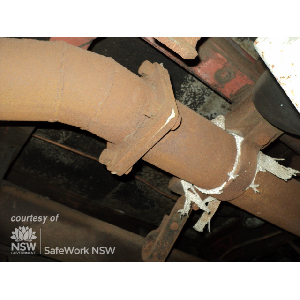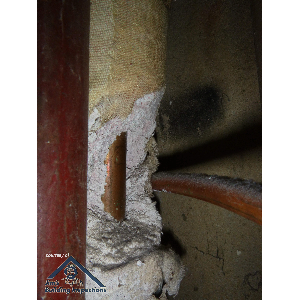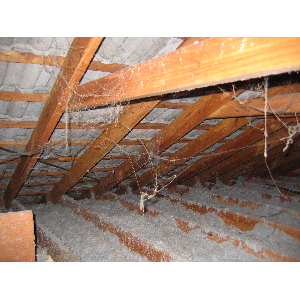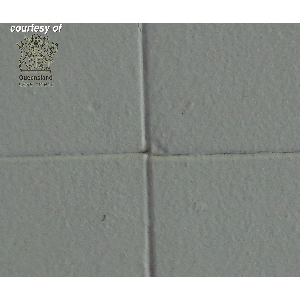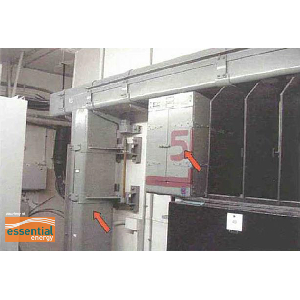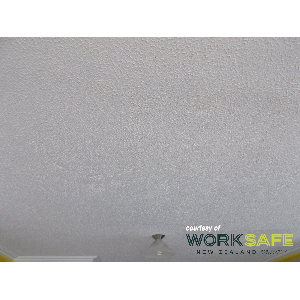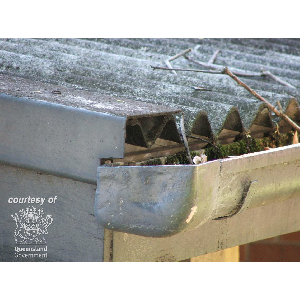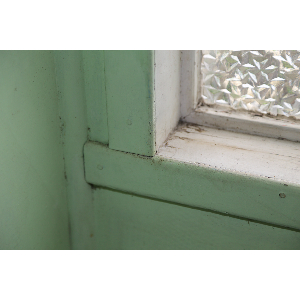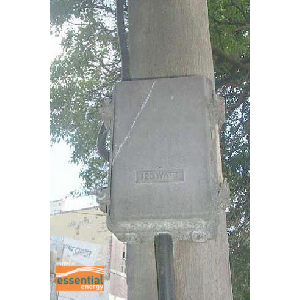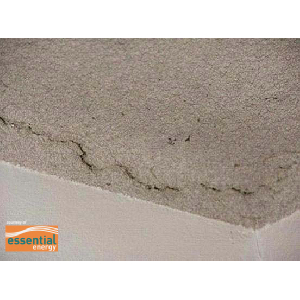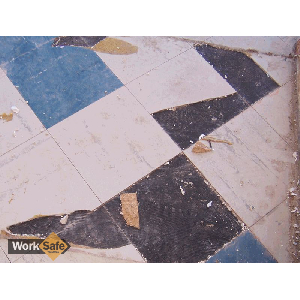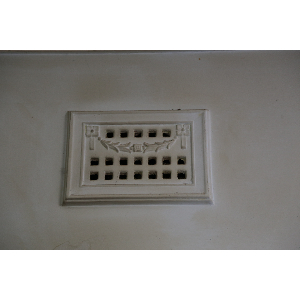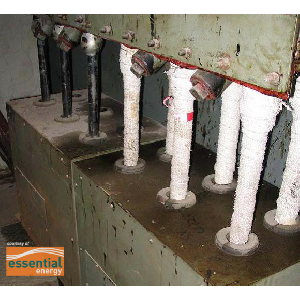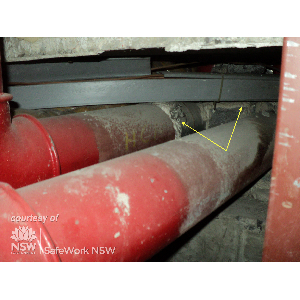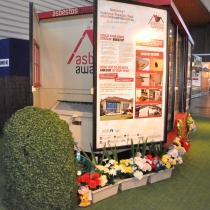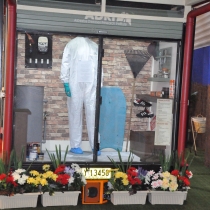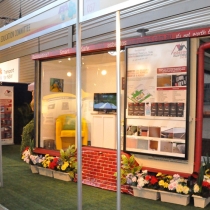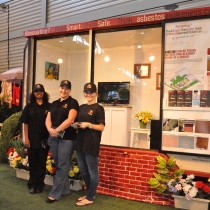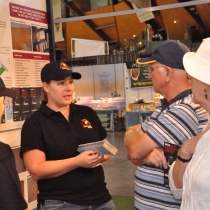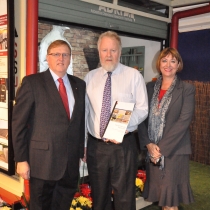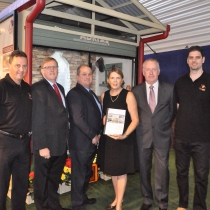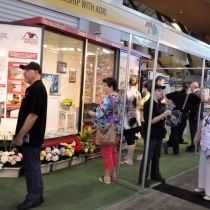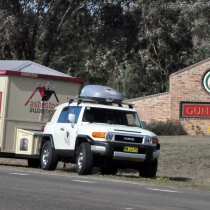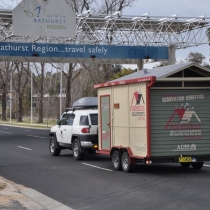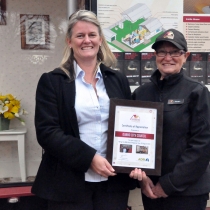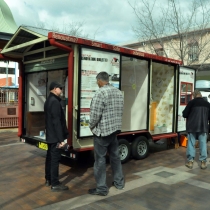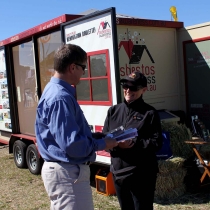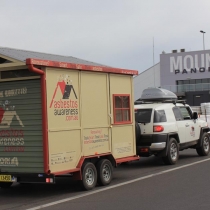TAS
Fact Sheets & Checklists
HOMEOWNERS
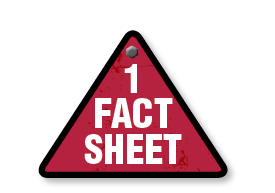 |
FACT SHEET 1: WORKING SAFELY WITH ASBESTOS AROUND THE HOMEA simple guide to ensure homeowners manage asbestos safely. Download Size 3MB |
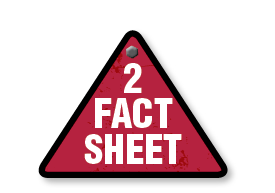 |
FACT SHEET 2: SAFE PRACTICES FOR HOMEOWNERS REPAIRING OR REMOVING SMALL AMOUNTS OF ASBESTOS MATERIALSA detailed guide to ensuring homeowners manage asbestos safely when repairing or removing small amounts of asbestos safely. Download Size 4MB |
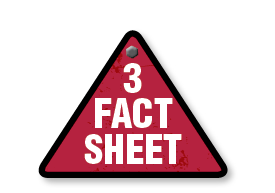 |
FACT SHEET 3: SAFE PRACTICES FOR RURAL & REGIONAL HOMEOWNERS & FARMERS REPAIRING OR REMOVING SMALL AMOUNTS OF ASBESTOS MATERIALSA simple guide ensuring safe practices for the management of asbestos in rural and regional communities and on farms. Download Size 4MB |
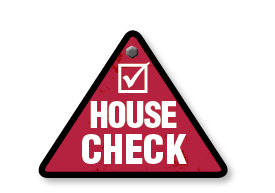 |
THE RESIDENTIAL CHECKLIST: A HOMEOWNER’S GUIDE TO IDENTIFYING ASBESTOS-CONTAINING MATERIAL TO MANAGE IT SAFELY‘The Residential Checklist‘ is designed to empower homeowners and renovators with a better understanding of the possible locations of asbestos-containing materials in homes and the knowledge they need to ensure it is managed safely. These Checklists include product images and lists each possible location where asbestos-containing materials might be found both inside and outside homes. By following simple step-by-step instructions, in less than an hour homeowners can have a better understanding of the types of products that might be in their home and if it’s in need of maintenance, repair or removal. Download Size 4MB |
 |
BLANK CHECKLIST TABLE FOR ADDITIONAL LOCATIONS & PRODUCTSAdditional blank tables for checklists if you require additional space. Download Size 1MB |
 |
BLANK SCHEDULE TABLEAdditional blank schedule table if you require additional space. Download Size 1MB |
TRADIES
FACT SHEETS
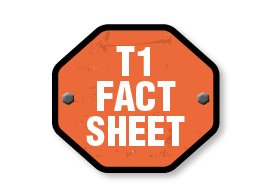 |
T1: 20 POINT SAFETY CHECK FOR TRADIESDownload Size 2MB |
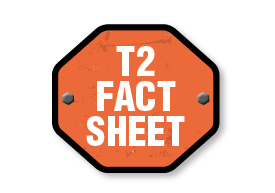 |
T2: A TRADIE’S GUIDE TO SAFE PRACTICES IN MANAGING ASBESTOS IN RESIDENTIAL PROPERTIESA detailed guide to ensure tradies manage asbestos safely when working in residential properties. Download Size 4MB |
CHECKLISTS
T3: A Trades-person’s Guide to Asbestos Containing Materials in Domestic PropertiesAn instruction guide for the Tradies Residential Asbestos Checklist Download Now |
|
 |
Total Property Checklist – GenericA total property guide to ensure tradies manage asbestos safely when working in residential properties. Download Now |
 |
Blank Checklist Tables For TradiesAdditional tables for checklists if you require additional space. Download Now |
 |
Blank Repair Schedules For TradiesAdditional repair schedules for checklists if additional space is required. Download Now |
TRADE SPECIFIC CHECKLISTS
| Instruction Guide: Residential Asbestos Checklist For Tradies – Download Checklist 4mb | |
|
|
|
|
|
|
|
|
|
|
|
|
|
|
|
|
|
|
|
|
|
|
|
|
|
|
|
|
|
|
|
|
|
|
|
|
|
|
|
|
|
|
TOOLBOX TALKS
 |
National Asbestos Awareness Month Toolbox TalkDownload Now |
 |
Unexpected Asbestos FindsDownload Now |
 |
Types of asbestos common in constructionDownload Now |
 |
Naturally Occurring AsbestosDownload Now |
 |
Managing asbestos in the workplaceDownload Now |
 |
Exploding Asbestos MythsDownload Now |
 |
Commercial Non-residential PropertiesDownload Now |
 |
Asbestos Management Plans & RegistersDownload Now |
 |
Asbestos in residential propertiesDownload Now |
 |
Rural and regional propertiesDownload Now |
 |
Download All 10 Toolbox Talks in single PDF Download All 10 Toolbox Talks in zip file |
COMMERCIAL & NON-RESIDENTIAL
 |
ASBESTOS MANAGEMENT HANDBOOK FOR COMMERCIAL & NON-RESIDENTIAL PROPERTIESThe Handbook is a comprehensive guide providing information on the roles and responsibilities of property owners, managers, contractors, sub-contractors, foreman and workers. It features easy to follow step-by-step instructions on how to develop and implement policies and procedures to assist in identifying and managing asbestos safely and in accordance with regulations. It includes a list of property types across multiple sectors including government, business (high rise, mid-rise, low rise), industrial, agriculture, recreation, education and more. The Handbook that explains complex information in user-friendly, accessible terms is complemented by Fact Sheets and Templates. The Handbook also features images of asbestos-containing products commonly found in commercial and non-residential properties.
|
 |
ASBESTOS REGISTER TEMPLATEThe Asbestos Register is one of the most important documents required to manage asbestos safely. The Template can be downloaded in Excel enabling users to note the locations and types of asbestos-containing materials (ACMs) found in properties, the areas where ACM is suspected but not confirmed, if and when testing has been conducted; and, if ACM has or is to be removed.
|
 |
MODEL ASBESTOS MANAGEMENT PLAN (AMP) GUIDE TEMPLATEWhile the Handbook provides instructions and recommendations for developing an Asbestos Management Plan (AMP), this Template is a user-friendly guide that lists the various steps required to meet mandatory requirements. The Template is pre-prepared in Word and incorporates all the information required to ensure asbestos is managed safely and in accordance with regulations.
|
 |
ASBESTOS REMOVAL RECORD TEMPLATEThe Asbestos Removal Record Template enables users to record the removal of asbestos-containing materials (ACMs) found in properties.
|
 |
WORKERS TRAINING REQUIREMENTS & RECORDS TEMPLATEIt is a mandatory requirement that all workers who may come into contact with asbestos must be trained to identify and manage asbestos and ACMs in accordance with regulations, and to ensure they understand the risks and procedures required to manage asbestos safely. All training of workers must be recorded and maintained for five years after employment has ceased. The Template can be downloaded in either Excel or Word to assist managers in recording all staff training in accordance with regulations.
|
 |
MODEL ASBESTOS POLICY FOR CONTRACTORS & BUILDERS TEMPLATEThe Model Asbestos Policy Template is designed to assist contractors and builders to initiate asbestos safety policies in their workplace. The Template can be downloaded in Word to enable managers or business owners to incorporate a logo, company name and any additional information they wish to include as part of their Asbestos Policy.
|
 |
MODEL ASBESTOS MANAGEMENT PROCEDURES FOR CONTRACTORS & BUILDERS TEMPLATEAsbestos Management Procedures are an essential part of an AMP. The Template is designed to provide contractors and builders with the resources they need to ensure their asbestos management procedures are effective to minimise exposure of asbestos fibres among workers.
|
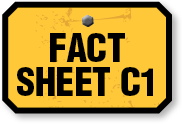 |
FACT SHEET C1 – UNEXPECTED ASBESTOS, ACM FINDS OR INCIDENTS PROCEDURES FLOW CHARTThe Flow Chart provides a user-friendly, step-by-step visual guide to managing unexpected asbestos finds in accordance with regulations which can be displayed in the workplace and issued to workers as part of their training.
|
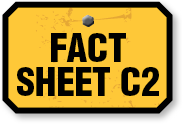 |
FACT SHEET C2 – UNEXPECTED ASBESTOS FINDS OR INCIDENTSUnexpected asbestos finds pose a threat to workers so it’s vital that they are trained in the steps required to minimise exposure to asbestos fibres. This Fact Sheet provides guidance and step-by-step procedures for managing unexpected finds or incidents and where possible, what is required to minimise any future risks.
|
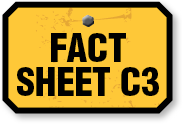 |
FACT SHEET C3 – ASBESTOS MANAGEMENT RECOMMENDATIONS AND GUIDELINESThe Asbestos Management Recommendations & Guidelines Fact Sheet provides users with user-friendly information for the safe management of asbestos in commercial and non-residential properties which may be issued to workers as part of their training program.
|
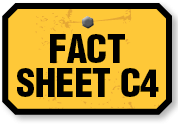 |
FACT SHEET C4 – USING PPE AND RPEKnowing when, why and how to use and lawfully dispose of PPE and RPE is critical to workers who may come in contact with asbestos on the job. This Fact Sheet provides step-by-step instructions on how to use and dispose of PPE and RPE in accordance with regulations.
|
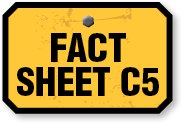 |
FACT SHEET C5 – ROLES AND RESPONSIBILITIES FOR THE MANAGEMENT OF ASBESTOS AND ACMThis Fact Sheet contains a matrix to visually demonstrate the various responsibilities of property owners, contractors, subcontractors and workers when it comes to managing asbestos safely in the workplace.
|
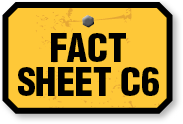 |
FACT SHEET C6 – 20 POINT SAFETY CHECK FOR CONTRACTORS, SUBCONTRACTORS AND WORKERSThis checklist provides 20 key points to assist in managing asbestos safely and may be used as part of asbestos awareness training programs.
|
 |
ALL COMMERCIAL RESOURCESAccess and download all files including ‘Print Ready’ files with crop marks, digital files and fact sheets etc |
NATURALLY OCCURRING ASBESTOS
While the NOA Guide was developed for use by people living in NSW, the practices the Guide recommends in establishing and maintaining a NOA Asbestos Management Plan may also be appropriate for use in any community where NOA has been identified or is suspected. Generic versions of the Naturally Occurring Asbestos – Asbestos Management Plan Guide and templates were created for reference by people living and working in states other than NSW. If you live in a state or territory other than NSW, contact your regulator to ensure NOA is managed in accordance with regulations.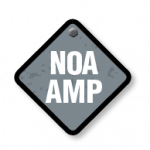 |
NATURALLY OCCURRING ASBESTOS – ASBESTOS MANAGEMENT PLAN GUIDEThe Naturally Occurring Asbestos – Asbestos Management Plan Guide explains the reasons why it’s important to manage NOA safely, when and where NOA may pose a potential health risk, who to contact for advice, and the steps required to manage NOA safely in accordance with NSW Work, Health and Safety Regulations 2017 and the Codes of Practice for asbestos management. User-friendly templates have been developed to assist people in developing and managing an Asbestos Management Plan. All templates are available in 2 formats. The first includes fields where users can type information, and the second is in PDF format that can be printed for handwritten notes.
|
 |
ASBESTOS MANAGEMENT PLAN – SITE SPECIFIC TEMPLATEThis template is designed for use when conducting risk assessments in various parts of properties as work is required.
|
 |
ASBESTOS MANAGEMENT PLAN – PROPERTY RISK ASSESSMENT TEMPLATEThis template enables users to itemise the necessary information when conducting a property risk assessment for naturally occurring asbestos.
|
 |
INCIDENT PROCEDURES & REPORT TEMPLATEThis template enables users to record incidents and steps to manage and record incidences should they occur.
|
 |
WORKERS TRAINING REQUIREMENTS & RECORDS TEMPLATEThis template assists managers in recording and maintaining records of training undertaken by workers in asbestos awareness and naturally occurring asbestos.
|
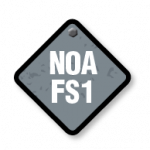 |
FACT SHEET 1: NOA DECONTAMINATIONThe Decontamination Fact Sheet provides information about the importance of personal and equipment decontamination when working with NOA and the steps for disposal and transportation of NOA. Download Size 1.3MB |
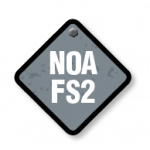 |
FACT SHEET 2: NOA RPE & PPEThe NOA RPE and PPE Fact Sheet provides information about Respiratory Protective Equipment (RPE) and Personal Protective Equipment (PPE) is, why it’s essential and how to use it correctly and effectively. Download Size 1.3MB Download Size 1.7MB |
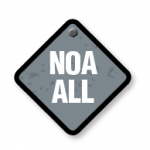 |
ALL NOA DOCUMENTATIONAccess and download all files including ‘Print Ready’ files with crop marks, digital files and fact sheets etc ACCESS ALL FILES |
Video: Asbestos In Your Home
Asbestos In Homes: A Guide to Identification, Testing & Removal
Asbestos in Homes: A Guide to Identification, Testing and Removal demonstrates the entire process of safe asbestos management by professionals from assessment, identification and removal of asbestos-containing materials to obtaining a clearance certificate to ensure they meet government requirements. Industry experts explain asbestos safety, the legalities and shows property owners the simple steps they need to take BEFORE starting renovations so they know how to protect themselves, their families, tradies and anyone who might risk exposure to asbestos fibres during renovations, demolition and maintenance.
Featuring industry leaders Cherie Barber, Australia’s Renovation Queen™ and Asbestos Awareness Ambassador and members of the Asbestos Education Committee; Bret Baker, President of the Asbestos & Hazmat Removal Contractors Association of NSW (AHRCA); John Batty, President of the Asbestos & Hazardous-Materials Consultants Association (AHCA); and Mathew Klintfält, homeowner and renovator who continues the work of his late mother Carol Klintfält OAM in asbestos awareness advocacy, together we’re continuing to provide essential, informative tools that can help save lives.
The Asbestos In Homes: A guide to Identification, Testing & Removal video was proudly sponsored by EDP – an RSK Company, Renovating For Profit, Beasy PTY Ltd, The Asbestos Education Committee & Advocacy Australia.
Asbestos In Homes: Identification, Testing & Removal (Full Length)
Asbestos In Homes: Identification, Testing & Removal (Overview)
Our heartfelt thanks to Cherie Barber for producing this informative video for the National Asbestos Awareness campaign. Cherie has been an Asbestos Awareness Ambassador since 2013 and is widely known as Australia’s Renovation Queen and the nation’s leading authority on profitable home renovating. Thanks to Cherie’s undying dedication to increasing awareness of the dangers of asbestos among homeowners and renovators, together we’re helping to prevent the incidences of asbestos-related diseases across Australia.
Asbestos In Your Home: The Ultimate Renovators Guide
NOTE: Since this video was produced, in accordance with revised national data, the year for the end of residential asbestos use has been extended from 1987 to 1990.
Asbestos Database A-Z
Acetylene gas cylinders used in welding prior to 1984 contained asbestos in the solvent-bearing mass to add stability without flammability. It does not pose a threat to the user, only how the tank is lawfully disposed.
View Product
Concrete slabs can contain various forms of Asbestos: Asbestos Cement Sheets used as formwork (board used to mould/barrier building products, often concrete). It is often easier to see from under the house. Common areas to find this are below fi...
View Product
Adhesives, mastics, putty, sealants, plasters and paints are the various types of adhesives known to contain asbestos. They include: Asphaltic cutback adhesive: This is black in colour and is usually found beneath vinyl tiles and flooring. Asbes...
View Product
Hard, brittle material, usually grey in colour with low asbestos content (up to 30 per cent). Asbestos Cement conduits were mainly used to convey HV and LV cables into and out of substations, buried under road crossings, containing cables inside or b...
View Product
Smooth, flat fibre cement sheet that is painted on-site to create a flat panel look. Tough, flexible sheeting suitable for external cladding and internal lining. Flat cement sheets were made of asbestos fibres and cement mix, commonly in the ratio of...
View Product
Not all vermiculite contains asbestos. Only scientific testing will determine if the vermiculite contains asbestos. Vermiculite is a silver-gold to gray-brown mineral that isflat and shiny in its natural state. When heated to around 1000 degrees...
View Product
Asbestos covering on electrical cables for heat resistance. Asbestos bandaged cable is typically located in switch roomsand switchyards of some zone and sub-transmission substations, underground andchamber distribution substations, as well...
View Product
Soft flexible rope usually fitted in the door, lid, and hatch recess to seal the associated enclosure/box.The rope seal becomes quite hard with the age. Can be found in 100A Wilco power outlets, 11kV OCB contactor boxes and other boxes where a heat r...
View Product
Backing boards are commonly used as the mounting base for switchboards, protection panels, street lighting panels, auxiliary power boards, etc.They are usually fixed to a steel construction which is attached to the floor and walls of the substation.F...
View Product
Brake pads are used as a friction material in all kind of older braking systems. They are very hard, attached to brake shoes in cars, lifts, cable drum stands, etc. Since a total asbestos ban they have not been used, but can still be found in older t...
View Product
Asbestos was carried in hessian bags from Wittenoon in Western Australia which was then subsequently used in some carpet underlay. Also asbestos was used in the adhesive to glue down the carpet underlay which is usually a black bitumous material.&nbs...
View Product
Asbestos-containing dark grey to brown in colour, mastic flexible Non Corrosive putty, typically used for fire-proofing and to prevent the entry of water into substations and cable pits, specifically in cable ducts and equipment hatches. It also seal...
View Product
Used for pipes, tanks, flower pots, telephone and electricity pits, guttering, skillet roof corners
View Product
A premixed layer of sand and cement to brick, cement, stone or mud brick. It is often textured, coloured or painted after application.
View Product
Compressed, smooth-faced asbestos cement sheeting for interior and exterior use. Permanently coloured on one side
View Product
Fibro asbestos cement sheeting, typically used as an internal wall and ceiling lining in laundries, kitchens and high-traffic areas in residential, medium-density and commercial buildings,
View Product
Medium density asbestos cement sheet on a metal backing to protect protection relays against heat and electrical arcs from the contractors arc chute when operating. These have been found in 11kV Westinghouse J18/B18 family of circuit breakers, i...
View Product
A compressed fibre cement structural flooring substrate for ceramic tile finishes over timber or lightweight steel floor joists
View Product
Corrugated cement sheets were mainly used for substation roofs, fences, shed walls etc.After prolonged use and weathering they deteriorate and can release asbestos fibres in small quantities which could be deposited near downpipes if they flow to the...
View Product
Used as architrave around doors and windows, window sills also used a AC sheet joining strips can have plain or spigoted ends, including louvre blades, also used as cornices. A round nail can be visible on the strip, usually just above surface. Commo...
View Product
Eaves are the part of a roof which meets or overhangs thewalls of a building. Until the mid-late 1980s they were constructed of bondedasbestos sheeting. Signs of deterioration include discolouration, cracking orsplitting.
View Product
Black in colour, smooth, hard polished surface.English Electric fuse holders are used mainly in CBD underground and basement substations and they are the only product from the English Electric fuse holder family that contains asbestos. Asbestos is bo...
View Product
Fire dampers are used in buildings to help prevent the spread of a fire should one arise. These items are placed in the walls and ceilings of buildings, often within the duct system, to compartmentalisethe space so that if fire penetrates on an area,...
View Product
By the fire regulation substation entrance and internal doors must be fire rated. Asbestos was widely used in the internal construction or backing of fire doors due to its excellent fire resistance properties. That includes switchroom fire doors (woo...
View Product
Asbestos containing materials were used as insulation around Fire Places, Wood Fire Heaters, within gas heaters and also as the wick in kerosene heaters.
View Product
Includes socketed pipes, bends (all angles), tees, loose sockets, blank caps, cone cap cowls, Chinaman hat cowls, H piece, T piece, Smith cowl, west cowl, mushroom cowl, double Chinaman hat, torpedo cowl and tapered reducers.
View Product
Fuses containing asbestos were used at customer meter boards mainly during the 1960s. These fuses have two main types, Henley fuses with a millboard wrap around the fuse element and fuses with a friable asbestos matting for arc quenching
View Product
Includes outdoor and garden accessories such as compressed sheet top tables, compressed sheet seats and bench tops, planter bowls, letter-box stands. Form work for garden beds and buried off cuts.
View Product
A mechanical seal which fills the space between two or more mating surfaces, generally to prevent leakage from or into the joined objects while under compression
View Product
Personal protective equipment worn to cover and protect the hands from the wrist to the fingers.
View Product
A form of weatherboarding which acts as the cladding of a house, usually consisting of long, thin timber boards that overlap horizontally.
View Product
Asbestos-containing HV striker fuses are commonly used in 11kV Ring Main Isolators and Fuse Switches that will take 10 inch oil immersed fuses. These fuses may also be stored in depots and substations as replacement spares. Asbestos is encased inside...
View Product
The imitation brick may contain asbestos, however the sheeting located behind was commonly asbestos containing sheeting. The imitation brick was commonly nailed onto the asbestos sheeting.
View Product
Thermal insulation materials in the form of granules, fibres, or other types of pieces that can be poured, pumped, or placed by hand.
View Product
Asbestolux was typically used as wall and ceiling panels, often in high humidity applications. It has been used for fire protection, thermal and acoustic insulation and for general building work in industrial and commercial buildings, education facil...
View Product
Asbestos millboard was used in the construction industry all over the world. Because of its flame-resistant durability it became a popular material to use above fireplaces and stove-tops, as well as other locations in walls and ceilings. Millboa...
View Product
Moulded cement sheets were mainly used for cable troughings, fuse boxes, CBD UG substation busbar trunking, etc. They are basically flat cement sheet moulded to suit the application, usually painted silver on the outside. Asbestos has been posit...
View Product
Soft non-hardening caulking material in one foot lengths for use in all types of seams, joints and openings. Refers to any process used to seal joints between pipes, planks, wall sections, etc.
View Product
A stucco or render building material used for coating walls and ceilings. It is manufactured as a dry powder and is mixed with water to form a paste when used.
View Product
Moulded asbestos cement roofing supplies including: Apron flashingBarge mouldingFluted saddle ridgingGutter flashingHalf-round ridge cappingPlain roll ridgingRidge cappingRoof ventilatorsSawtooth ridge cappingSide flashingSkylights and manholesV...
View Product
A substance used to block the passage of fluids through the surface or joints or openings in materials. In building construction sealant is sometimes synonymous with caulking and also serve the purposes of blocking dust, sound and heat transmission.
View Product
Fully compressed A.C. sheets with smooth surfaces on both sides. For specialised use such as balustrades, stair treads, infills for curtain walls, toilet partitions, bathroom floors, suspended decks, sun louvres, window sills, laboratory bench tops, ...
View Product
Cast aluminium street light choke box with an asbestos rope seal fitted in the flange under the cover (internal, not visible from outside when closed). Silver opaque metallic colour, painted or unpainted metal box attached to the street lighting pole...
View Product
Fire rating and noise suppression, fire protection for structural steel girders, ceilings, air conditioning plant rooms - particularly for high rises, ships and walls.
View Product
Compressed and autoclaved, coloured and patterned waterproof cement sheeting, used mainly in kitchens, bathrooms and laundries
View Product
Solid, brittle material in a variety of colours used in control rooms, bathrooms, common rooms andamenities rooms of zone substations and Field Service Centres. Sometimes used in bigger distribution substations. Can also be referred to as lino o...
View Product
Asbestos containing material has been found in wall vents used for ventilation in domestic homes.
View Product
Soft, flexible or brittle when dry material, grey dark colour used in old style steel framed windows as theglazing putty. Generally found in older chamber substations.
View Product
Cable bandages were installed as a means of fire protection on electrical cables in electrical substations, typically located in switchrooms and switchyards of Zone and Sub-transmission substations, underground and chamber distribution substations, a...
View Product
Soft woven material, white to grey in colour with high asbestos content, used for flexible fireproof couplings,air conditioning and other ducting.
View Product
Awards – 2014 Winners

In 2014 there were 28 winners in the national ‘Betty Awards’ for their significant contribution to community education during national Asbestos Awareness Month. Organisations who actively participated and registered in the Asbestos Awareness Month Campaign were eligible to enter The Bettys.
Key to the campaign’s success is the invaluable contribution of stakeholders and community leaders who are able to reach out directly to their communities to help them understand asbestos products and educate them on safe practices. Of the 563 councils nationally, 343 (61%) registered their participation, an increase of 181% – the highest number of council participants since the campaign launched in 2012. In NSW, 131 (86%) of councils participated – a 98% increase on 2013, and with the exception of WA (59 Councils – 42%) over 50% of councils in all states and territories joined with the AEC to educate their communities.
Thank you for all the incredible support from all the organisations who participated.
Best Asbestos Awareness Month Campaigner: Government Department or Organisation
Winner: The Western Sydney Regional Organisation of Councils
Highly Commended: Local Government New South Wales
Most Innovative Asbestos Awareness Month Council Campaigner
Winner: Mornington Shire Council (QLD)
Highly Commended: Wollongong City Council (NSW)
Most Active Asbestos Awareness Month Council Campaigner Awards
Metropolitan New South Wales
Winner: Campbelltown City Council
Highly Commended: Pittwater Council & Camden Council
Commended: Holroyd City Council
Metropolitan Victoria
Winner: Nillumbik Shire Council
Regional New South Wales
Winner: Wollongong City Council
Highly Commended: Liverpool Plains Shire Council, Mid-Western Regional Council & Queanbeyan City Council
Commended: Bega Valley Shire Council & Cooma-Monaro Shire Council
Regional Queensland
Winner: Mornington Shire Council
Highly Commended: Cook Shire Council
Regional South Australia
Winner: Wakefield Regional Council
Highly Commended: District Council of the Copper Coast
Honourable Mentions:
New South Wales: Parramatta City Council, Wagga Wagga City Council & Albury City Council
Queensland: Maranoa Regional Council
Tasmania: Glamorgan Spring Bay Council
Victoria: East Gippsland Shire Council, Knox City Council, Maroondah City Council
Western Australia: City of South Perth, City of Greater Geraldton, City of Kwinana
Enter now!
20 Point Safety Check
 Get to kNOw Asbestos – The 20 Point Asbestos Safety Check
Get to kNOw Asbestos – The 20 Point Asbestos Safety Check
- At least 1 in 3 Australian homes contain asbestos including brick, weatherboard, fibro and clad homes and apartments.
- Asbestos was widely used in the manufacture of building materials and other products prior to being phased out by 1990 and banned in 2003. Therefore:
- If your home was built or renovated prior to 1987 it is ‘highly likely’ that it contains products incorporating asbestos.
- If your home was built or renovated between 1987 and 1990 it is ‘likely’ that it may contain some asbestos-containing materials.
- However, if your home was built or renovated after 1990 it is ‘unlikely’ that asbestos-containing materials will be present.
- If asbestos is disturbed during renovations or maintenance your health and the health of your family could be at risk.
- DIY is not recommended where asbestos is present.
- When renovating or working in and around homes, if in doubt assume asbestos materials are present and take every precaution.
- Dealing with asbestos is important and serious, but it’s not overwhelming – IT IS MANAGEABLE!
- If you’re not sure if asbestos is in your home you can have it inspected by a licenced removalist or a licensed asbestos assessor.
- Products made from asbestos cement include fibro sheeting (flat and corrugated), water, drainage and flue pipes, roofing shingles, guttering and floor and wall coverings. It could be anywhere! Visit the Asbestos Products Database to find out more.
- If you find asbestos in your home; Don’t cut it! Don’t drill it! Don’t drop it! Don’t sand it! Don’t saw it! Don’t scrape it! Don’t scrub it! Don’t dismantle it! Don’t tip it! Don’t waterblast it! Don’t demolish it! And whatever you do… Don’t dump it!”
- If left undisturbed asbestos materials in good, stable condition are unlikely to release dangerous fibres and pose a health risk. Generally, you don’t need to remove the asbestos. Paint it and leave it alone but remember to check it occasionally for any signs of wear and tear.
- There are legal requirements regarding asbestos management, its removal and disposal.
- While some might follow the regulations and safety requirements to remove small amounts of asbestos, the safest way to manage its removal is to retain a licenced professional asbestos removalist equipped to protect you and your family from the dangers of asbestos dust and fibres.
- Where asbestos fibres are friable (loose and not bonded into building materials), ONLY licenced friable asbestos removalists are allowed to remove it.
- Professional removal of asbestos is affordable. You can’t afford not to use a professional!
- The cost of asbestos removal by a licenced professional is comparable to most licenced tradesmen including electricians, plumbers and tilers.
- The cost of disposal at a lawful site is often included with the cost of removal by a licenced professional.
- If you must work with any material that may contain asbestos or remove asbestos yourself, protect yourself and your family and follow the legal and safety requirements for the management of asbestos to minimise the release of dust or small particles from the asbestos materials.
- There are a number of safety precautions you will need to take including wearing specific protective clothing, the correct mask or breathing apparatus and ensure you minimise dust and dispose of it legally. Download Fact Sheet 1 or 2 for instructions on how to do this.
- Never use tools on asbestos materials as they will make asbestos fibres airborne including: Power tools such as electric drills, angle grinders, circular saws and electric sanders. Never use high pressure water blasters or compressed air.
- Don’t play renovation roulette! Think Smart. Think Safe. Think asbestosawareness.com.au – Because it’s not worth the risk!
Important Safety Facts To Know When Working With Asbestos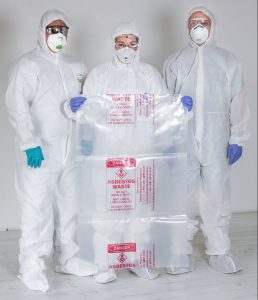
- PROTECT: There are a number of safety precautions you will need to take including wearing approved PPE and RPE such as protective clothing, the correct mask (not every mask is safe) or breathing apparatus.
- REMOVAL:
- To learn more information about working safely with asbestos read Safe Work Australia’s Model Code of Practice: How to safely remove asbestos July 2020.
- Asbestos – A guide for householders and the general public.
- To learn about specific council regulations contact your local council
- DISPOSAL: To locate your closest asbestos disposal facility visit the Asbestos Safety & Eradication Agency’s disposal database
Find Out More About Managing Asbestos Safely
Multiple Fact Sheets and downloadable resources have been developed for homeowners, tradies, farmers and commercial properties on how to manage asbestos in the their homes and workplaces safely including:
- FS1: Fact Sheet 1 Working Safely With Asbestos Around The Home
- FS2: Fact Sheet 2 Safe practices for homeowners repairing or removing small amounts of asbestos materials
- FS3: Fact Sheet 3 Rural, Regional & Farming
- FS4: Fact Sheet 4 PPE & RPE
- T2: A Tradie’s Guide To Safe Practices In Managing Asbestos In Residential Properties
- Asbestos Management Handbook For Commercial & Non-Residential Properties
- Naturally Occurring Asbestos Guide



